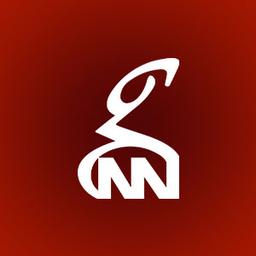The volcano's alert level has also been upgraded from an "advisory" to a "warning" - the highest classification.


The world's largest active volcano, Hawaii's Mauna Loa, has erupted for the first time in almost 40 years.
The lava flow is mostly contained within the summit, but residents have been placed on alert and were earlier warned about the risk of falling ash.
The US Geological Service (USGS) has said the situation could change rapidly.
The volcano's alert level has also been upgraded from an "advisory" to a "warning" - the highest classification.
No evacuation orders have been issued and populated areas are unlikely to be impacted at this stage, emergency officials say.
Mauna Loa, located inside Hawaii Volcanoes National Park, covers half of the US state's Big Island. The volcano rises 13,679ft (4,169m) above sea level and spans an area of more than 2,000 sq miles (5,179 sq km).
It erupted at 23:30 local time on Sunday (09:30 GMT Monday) at Moku'āweoweo, the volcano's summit caldera. Calderas are hollows that form beneath the summit at the end of an eruption.
It followed a series of warnings that an eruption was possible after a spate of recent earthquakes in the region, including more than a dozen reported tremors on Sunday.
An advisory for ashfall - which can contaminate water supplies, kill vegetation and irritate the lungs - was in effect for the surrounding area overnight but has since been lifted.
"Based on past events, the early stages of a Mauna Loa eruption can be very dynamic and the location and advance of lava flows can change rapidly," the USGS said.
If the eruption migrates beyond the walls of the summit caldera, lava flows could "move rapidly downslope", it added.
According to the USGS, Mauna Loa has erupted 33 times since 1843. The previous eruption in 1984 sent lava flows within 5 miles of Hilo, the island's most populous town.
But the Big Island's population has more than doubled since 1980 to around 200,000 residents and Hawaii's civil defence agency has warned residents could face a "lava disaster".
"These lava flows rarely present a risk to life, but they can be extremely destructive to infrastructure," said Dr Jessica Johnson, a British volcano geophysicist who has worked at the Hawaiian Volcano Observatory.
She warned the lava flows posed a risk to Hilo and Kona, another major population centre, adding that the volcanic gasses could cause breathing problems for locals,
Mauna Loa is the world's largest active volcano. There are other larger volcanoes but these are classified as dormant, meaning they have not erupted for a long time, or extinct, meaning they are almost certain not to erupt in future.
Mauna Loa shares the Big Island with Mauna Kea, which is the tallest mountain in the world when measured from its underwater base nearly 20,000ft below the ocean surface.
SOURCE: BBC

Young Leaders Conference 2025 highlights social stewardship on day two
- 14 hours ago

Please don’t make airports healthy again. Just make them more efficient.
- 5 hours ago
Tagic Army Public School (APS) Peshawar incident completes 11 painful years
- 13 hours ago
Pakistan qualify for semi-final of under 19 Asia Cup cricket
- 14 hours ago
Sabalenka named WTA Player of the Year for second straight season
- 17 hours ago

Gold prices dip per tola in Pakistan, global markets
- 17 hours ago

A Kinect for kids is outselling Xbox to become the hot console this holiday
- 7 hours ago

Assailants kill cop, brother in gun attack in KP’s Lakki Marwat
- 14 hours ago
Arteta tells critics to back off struggling Gyökeres
- 6 hours ago

YouTube made its video player easier to navigate on TVs
- 7 hours ago
AI boom seen lifting chipmaking equipment sales 9pc to $126bn in 2026
- 14 hours ago

My defense of a $40 cable paperweight – I’m sorry
- 7 hours ago

